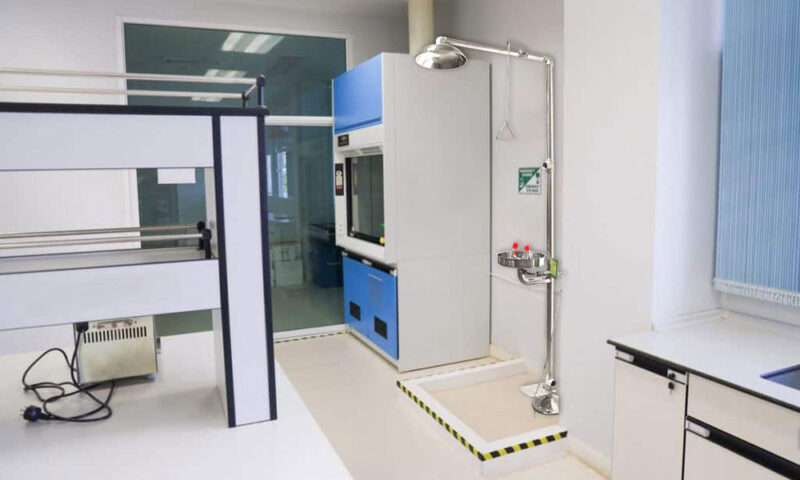In a compact dental clinic environment, where space is at a premium and sterility is paramount, a well-designed eyewash station is crucial for ensuring safety and rapid response to eye emergencies. Dental professionals routinely work with various chemicals, biological materials, and small particles that pose potential risks to eye safety. A properly installed and maintained eyewash station complies with safety regulations and provides immediate and effective care in case of eye-related incidents.
Class B Eyewash Station: Meeting Safety Standards
The recommended eyewash station for dental clinics is classified as Class B, which meets stringent safety requirements. Class B stations are designed to provide a controlled flow of flushing fluid to both eyes simultaneously, ensuring thorough and effective cleansing in emergency situations. This classification guarantees that the station can deliver the necessary volume and pressure of water to effectively rinse contaminants from the eyes for the required duration, typically 15 minutes as per ANSI standards.
Easy Operation and High Efficiency
In an emergency, every second counts. The eyewash station in a dental clinic must be designed for easy and intuitive operation. Features that contribute to ease of use include highly visible signage, simple activation mechanisms (such as push-bars or foot pedals), and hands-free operation once activated. Clear instructions for use should be prominently displayed near the station.
Versatility in Size and Function
To accommodate different dental clinics’ varying layouts and needs, eyewash stations should be available in multiple sizes and configurations. This versatility ensures that every clinic can find a suitable solution, regardless of its specific spatial constraints or requirements. Options may include compact wall-mounted units for extremely tight spaces, combination units that incorporate both eyewash and emergency shower capabilities, and portable eyewash stations for clinics without direct plumbing access.
Compliance with Regulatory Standards
When selecting and installing an eyewash station, dental clinics must ensure compliance with relevant regulatory standards, including ANSI/ISEA Z358.1 for emergency eyewash and shower equipment, OSHA requirements for workplace safety, local building and plumbing codes, and ADA accessibility guidelines. Adherence to these standards not only ensures legal compliance but also provides assurance that the eyewash station meets recognized safety benchmarks.
Conclusion
A safe eyewash station is an indispensable component of a dental clinic’s safety infrastructure. By carefully considering factors such as ease of use, efficiency, versatility, safety performance, and integration with existing protocols, dental practices can select and maintain an eyewash station that provides optimal protection for staff and patients alike. Regular training, maintenance, and compliance with regulatory standards further enhance the effectiveness of this critical safety equipment, ensuring that dental professionals can work with confidence, knowing that rapid and reliable eye care is always within reach in case of an emergency.

